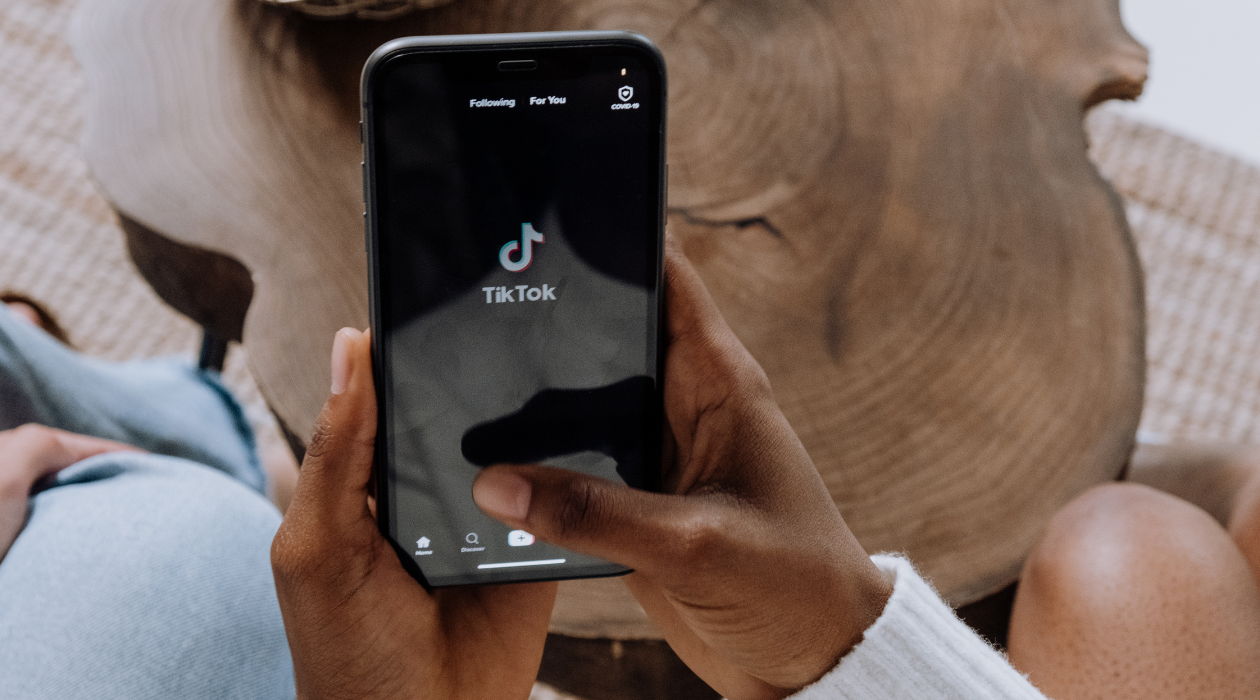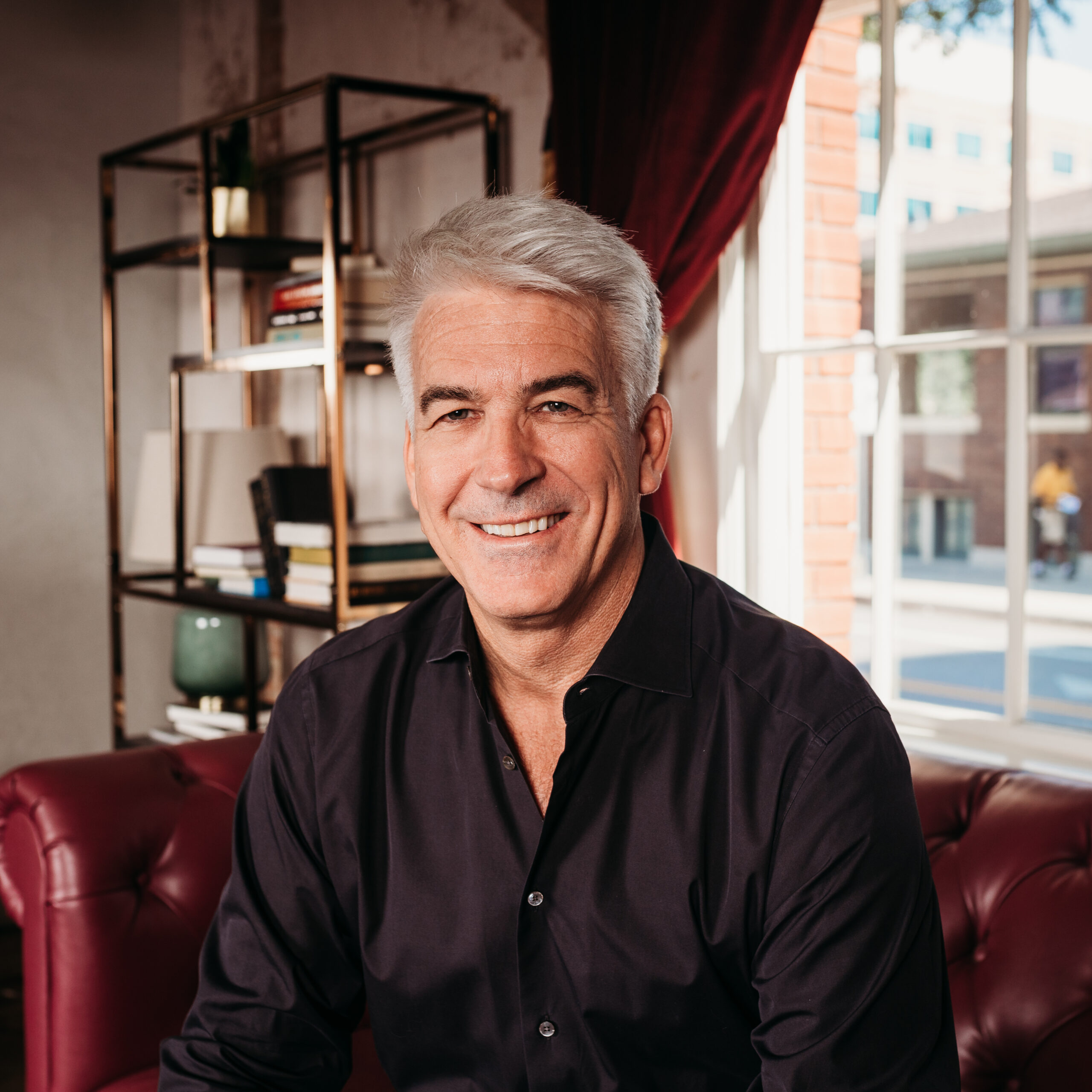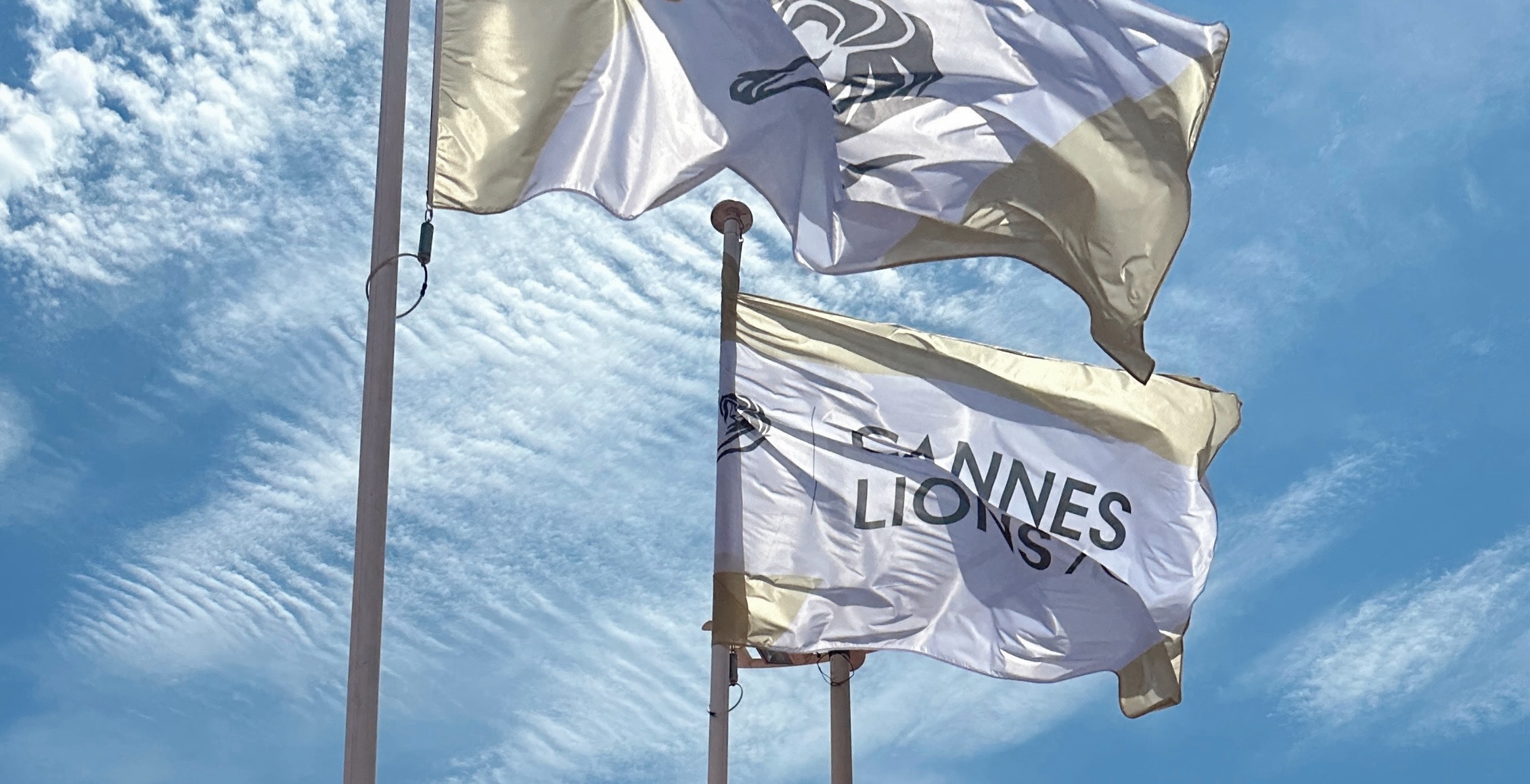TikTok on “Borrowed Time” in the U.S.

By TMA Media Strategists Tommy Gunning & Emily Nicoletta [Header image credit: Canva]
Since its advent, social media has continuously evolved and morphed both in popularity of platform and breadth of functionality.
Recently, the platform TikTok has been at the forefront of social media. While its 800 million worldwide active user base sits at the seventh largest, TikTok has consistently been in the top five most downloaded apps since 2018; breaking up the monopoly that was Facebook’s arsenal of apps that had held the top four positions since 2015 (What’sApp, Facebook, Facebook Messenger, Instagram). At the end of 2019, TikTok saw itself in the number two spot, and its user base has shown no sight of slowing down in growth.
TikTok’s Current Relationship with Advertisers
From an advertising perspective, a few statistics stand out as to why brands should jump on the TikTok train. The first two are the amount of time users spend on TikTok as well as how often they engage with the platform. The average amount of time a user spends on the app is 52 minutes per day, with 90% of the users opening the app on a daily basis.
TikTok has also captured a very alluring demographic, with over 60% of users belonging to Gen Z – between the ages of 16-24. This provides a huge opportunity for brands to establish a relationship with potential consumers at a young age that could be reinforced and cultivated towards long-term brand loyalty through continuous exposure on the platform. Lastly, TikTok has the highest engagement rate per post than any of the prominent social media platforms.
In addition to TikTok’s popularity, its effortless virality and highly effective algorithm is a key differentiator that truly makes the platform unique. Users can garner millions of views and reactions with nothing but raw talent, humor, or creativity (unlike platforms like Instagram that tend to run more on a “pay to play” model that relies heavily on complicated algorithms to prioritize content). While young influencers have taken full advantage of TikTok in order to launch themselves into stardom, brands have also found themselves more engaged and successful than ever. This is thanks to TikTok’s free reign for creativity and its “mob mentality” towards popular products or trends, such as:
- Popular beauty brand Too Faced went viral after the beauty gurus on the platform began sharing videos of themselves using their Lip Injection lip gloss. These videos created a wildfire effect, with beauty lovers all over the country flocking to makeup counters to give the plumping gloss a try. As a result, Too Faced Lip Injections lip gloss virtually sold out overnight and generated a waitlist that was months long, despite the fact that the product had been on the market for nearly six years.
- To celebrate National Avocado Day, Chipotle launched a #GuacDance challenge, encouraging fans to share videos showing off their dance moves. True to the virality of the platform, by the end of the campaign Chipotle had received over 250,000 video submissions and 430 million video views – all in less than one week.
- In 2019, Kool-Aid launched its first TikTok hashtag challenge offering a $10,000 prize as an incentive. Dynamic duo Lil Jon and The Kool-Aid Man encouraged users to share videos of themselves enjoying the holiday season with the hashtag #OhYEAHChristmas. By the end of the holiday season, over 10,000 videos were submitted, with influencers like “Glitterandlazers” generating 1.3 million views and 79.1K likes on her #OhYEAHChristmas post alone.
From a media execution standpoint, the transition over from the Facebook/Instagram campaign set up process to the TikTok Ads Manager platform has little-to-no learning curve as they are extremely similar in functionality and audience targeting capabilities. This means a brand’s introduction into the TikTok feed is fairly seamless. Just like any form of social media advertising, an important consideration to take into account is the audience a brand’s ads are being served to. As mentioned, TikTok’s primary base are Gen Z. While this bodes well for certain brands, it could prove to be troublesome for others.
TikTok’s Current Relationship with Politics
The year 2020 has seen an abrupt disruption to the normalcy of life as we know it. As a result of COVID-19, there has been a shift of human civilization indoors indefinitely. This has led to an increase in time spent on social media, with TikTok becoming even more prevalent.
Of its 800 million users, 10% are active and live in the U.S. In a political climate that’s more polarizing than ever, TikTok became a hot topic of conversation due to its origins. The video-sharing social media platform is owned by ByteDance, an internet technology company headquartered in Beijing, China.
In July, President Trump began voicing his disapproval of the social media app’s presence in the U.S., citing China’s accessibility to the data collected on the platform as the reason. President Trump’s solution to the potential problem of a data breach: ban TikTok in the U.S.
Why Ban TikTok?
Data collection, aggregation, and distribution have been a hot topic between the government and social media platforms for many years now. While advertisers and businesses have grown to truly value the benefits of highly targeted data within their digital campaigns, the public still cannot truly understand or grasp the intricacies behind data collection.
One thing must be addressed: many, if not all, social media apps including Facebook, Instagram, Twitter, and Snapchat are granted permissions to access a user’s camera, microphone, GPS location, and profile information without direct app use via acceptance of their Terms & Conditions. With this in mind, TikTok is no different than any other social app. However, it faces a unique form of scrutiny purely due to its direct Chinese ties.
Government officials in Washington, D.C. have become increasingly concerned that TikTok’s data collection could benefit nefarious causes because of its Chinese parent company, ByteDance. While this consideration has historically been taken seriously by Republicans and Democrats alike over the past few years, recently, the current administration began doubling down on TikTok, claiming it could be a direct threat to national security should the data from U.S. citizens fall into the hands of the Chinese government. Under Chinese law, companies can be required to comply with government requests such as handing over the data the app has compiled. However, ByteDance CEO Zhang Yiming has stated that the company stores the data outside of China and would resist any such request that came from the capital of China.
Regardless of the “he said, she said,” one thing is for certain, Trump has his sights set on banning TikTok, and the clock is ticking.
Could Trump Ban TikTok?
Although the President still has yet to specify in greater detail what a ban would entail, he has expressed his ability to ban the app through the use of an executive order. The ultimate goal would be to block it out of user accessibility in the same manner as India has done for the app already.
To realistically accomplish this, the U.S. government would have to force Google and Apple to sever ties with ByteDance. In order to get both mega-giant tech companies to comply, the Trump administration could have the Commerce Department add TikTok to its “entity list” that limits its allowable ties to U.S.-based companies to all but none. Congressional approval is not required for the current administration to take this action.
Having the app removed from Google Play and the App Store would greatly reduce TikTok’s appeal as well as the traffic it would receive from within the U.S. But not entirely. TikTok would still be accessible by browser. But the lure of the accessibility would be gone, and it would only be a matter of time before TikTok would die out entirely.
So, in theory, yes, President Trump could “ban” TikTok.
His original statement was that TikTok would become a thing of the past in the U.S. beginning August 1. However, an emergence of a new character in the social media soap opera saw his stance towards potentially outlawing the app change. Insert Microsoft.
Could Microsoft Save TikTok?
When you hear Microsoft, it does not immediately conjure an image of innovation. Many probably associate it with Windows loading screens on our computers back in the early 2000’s. Despite owning Xbox, one of the world’s most successful gaming consoles; top professional networking site, LinkedIn; and a host of indispensable word processing, presentation, and spreadsheet tools, Microsoft has lost its stature as a company on the cutting edge.
Because of this reputation, it is ultimately falling behind their competition and losing the rat race of relevance within big tech. While the tech giant may come off as a true wildcard in this deal, by acquiring one of the most popular social media apps in the country, Microsoft can prevent Facebook’s monopoly of the social media space from expanding while simultaneously securing themselves as a more relevant, modern company.
More importantly (and more realistically), acquiring TikTok would give Microsoft an impressive leg up from the competition due to the very reason we are in this pickle in the first place: data. In addition to owning a thriving platform full of young buyers, access to TikTok’s extensive archive of data could help Microsoft improve their outside entities as well. This could include taking advantage of this information in order to develop software and conduct game research for Xbox or using this as an opportunity to integrate and interconnect existing entities in a cross-platform model.
At this time, Microsoft has been in communication with The White House, who has given them approval to move forward in exploring the acquisition with a few interesting stipulations in place. The first being that upon closure of the deal, Microsoft must gift a “substantial” percentage of funds from the acquisition to the U.S. Treasury – a condition that has garnered criticism from outside entities. Additionally, there has been pressure from the President’s trade adviser, Peter Navarro, for Microsoft to divest some holdings in platforms used by the Chinese Communist Party, including Skype and Bing.
Stipulations, talks, and considerations aside, Microsoft currently has six weeks to move forward with arguably one of the most complicated deals in modern history in order to save this social media powerhouse.
Are There Risks in an Acquisition?
Absolutely. What Microsoft is proposing in its acquisition will be the first of its kind. Rather than purchasing TikTok as a whole, Microsoft would only acquire TikTok’s U.S., Canada, Australia, and New Zealand operations. Never before has an American business divided an application across national lines, which means there will likely be complications that arise as Microsoft develops a game plan.
TikTok is an app that is considered a great equalizer; here users from every country and background gather to express themselves, share their culture, and develop friendships. Because of the strict geographical lines drawn within this acquisition, areas like Asia and Europe would be cut out. This ultimately means that if this deal finalizes, the TikTok that Americans experience may become vastly different than the TikTok Europeans experience.
There are also potential risks regarding the content within TikTok and repercussions from cutting off global access. The platform began as a hotbed for dancing, lip-syncing, and silly antics. However, the app has evolved to see global activists, minorities, and disenfranchised groups flock to TikTok in masses. TikTok has grown a voice in the crusade for change.
These groups are using the platform’s ease of virality to spread the word over injustice, stage/organize movements, and call out the mainstream media. They can capture their culture and share their voice in a new and budding way. While there has been no direct confirmation or public acknowledgement surrounding this issue, many young activists and content creators from all over the world have expressed concern surrounding the potential acquisition, stressing the possibility of censorship and the withholding of information due to the platform’s proposed setup.
TikTok’s Potential Relationship with Advertisers
Brands were flocking to TikTok in droves up until just a few weeks ago when Tiktok became part of the political discourse. The negative associations working with a company under fire from the government, and the possibility that TikTok may get banned from the U.S. has many brands halting their association while this plays out. Meanwhile Instagram and Snapchat are moving quickly to steal some of that market share away from TikTok which could quell TikTok’s momentum even if everything gets figured out.
So, the answer to this section is either simple or complex. First, the simple answer lies with if a deal between Microsoft and ByteDance is not met by November 12 – the date that President Trump has laid down as the deadline for hands to be shaken and TikTok as an entity in the U.S. to fall under the Microsoft suite of products. If that were to not be accomplished, he has stated that he will move forward with wiping out TikTok as it is known in the U.S. From an international perspective, advertisers would still have a plentiful landscape on the worldwide map. The only greyed out areas would be that of India and the U.S.
The second, and more complex answer lies with if a deal is successfully reached. If Microsoft’s proposed plan moves forward, brands with international presence may find themselves in a challenging situation. Since there will essentially become two TikTok’s – one in the U.S., Canada, Australia, and New Zealand, and the other composed of the rest of the world.
It’s impossible to predict how the platform will develop concurrently as two separate entities and based on the user behavior of two segregated audiences. The two versions could evolve into very different landscapes of which to advertise on. Many brands and their agencies will be forced to reevaluate their global marketing strategy and break up budgeting, approaches, and processes accordingly to meet the appeal to two vastly different audiences on TikTok.
Developments Despite Uncertainty
Infiltration into the Sports Marketing World
Despite a looming date of dismantlement in the U.S., TikTok has formed a sponsoring partnership with arguably one of the most iconic sports franchises in the world – the New York Yankees. The deal is worth $10 million over a 3-year span, indicating the TikTok is betting on themselves for the long haul as a major player in the social media spectrum within the U.S. On their side of the mutually-beneficial deal, the Yankees are looking to leverage the platform to tap into a younger audience through exclusive content like behind-the-scenes with players and custom fan-first experiences that can only be found on TikTok.
Rise in Competition
With the possibility of TikTok being taken out, it has introduced an opportunity for competing platforms to jump in and take its place. Rival companies who are vying for the attention of social media users have wasted no time rolling out their own versions of platforms similar to TikTok. There are a handful of contenders offering promise as an alternative, the most prominent of which being Facebook’s newly released TikTok competitor: Reels. Users will likely find the transition to Reels to feel natural due to the editing interface and featured trends nearly mirroring TikTok. Marketers, however, are still cautious towards moving advertising dollars, as at the moment Reels offers no opportunity for monetization or advertising efforts. Aside from Reels, there is also growth and promise in a handful of similar, independent short-form video apps, including Triller, Dubsmash, and Byte.
Oracle Enters The Chat
Oracle has now thrown their hat into the ring as a potential TikTok buyer. The enterprise tech giant has been holding talks with investors to explore putting together a bid for the short-form video app, making the competition a bit steeper for Microsoft.
Not only will the increased competition throw a wrench in Microsoft’s already complicated acquisition strategy – Oracle also recently got the thumbs up to move forward from President Trump himself. Oracle remains one of the few tech companies to remain in the White House’s good graces, with Trump recently lauding Oracle’s founder as a “tremendous person,” and mentioning that “Oracle would be certainly somebody that could handle it.”
While an official bid from Oracle has yet to be extended, the future of TikTok continues to keep us on our toes.
Only time will tell the story of the fate of TikTok as it stands within the U.S. By November 12, we should all have an answer.
[Gabri Mays also contributed to this piece.]


